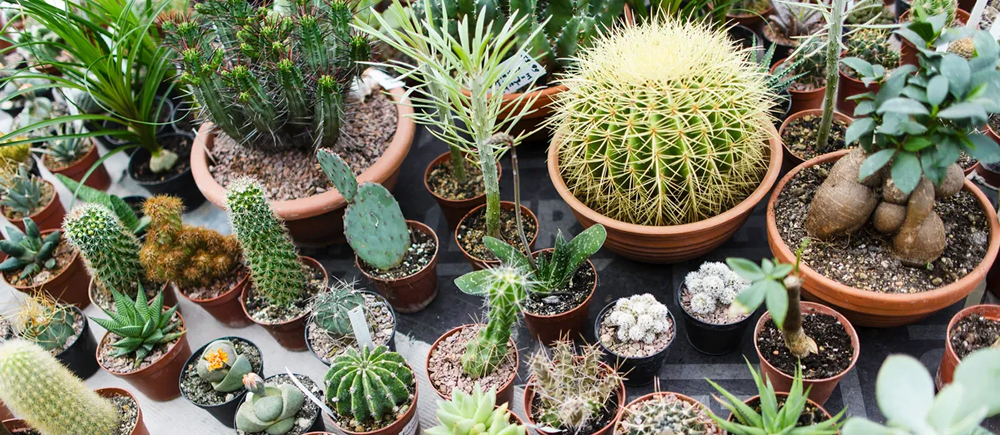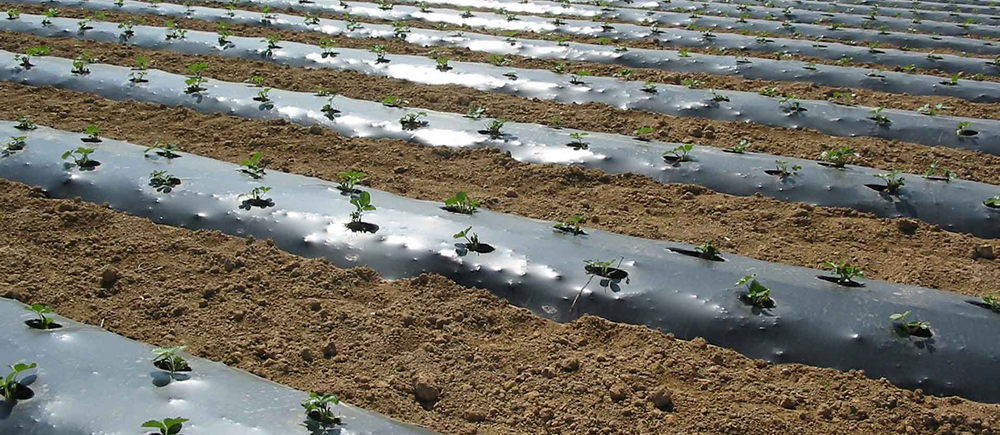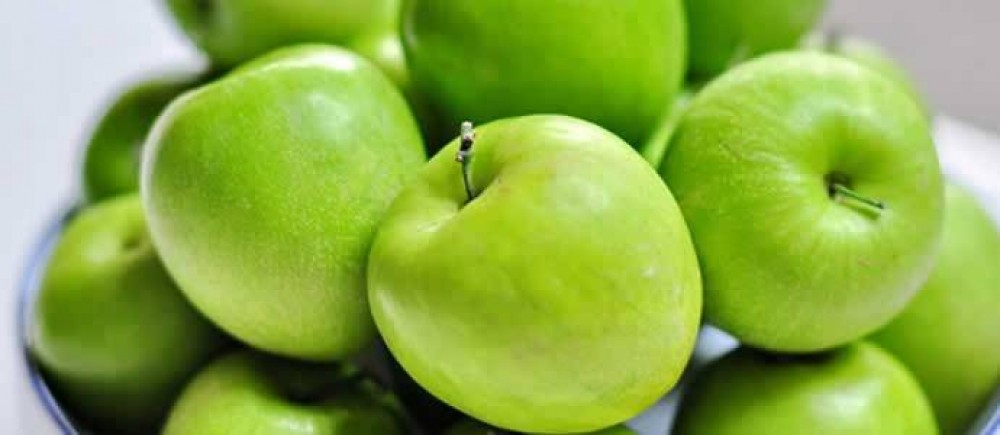
-
Telephone
(66)2-312-3395-7(66)2-752-5127-9 -
E-Mail
cs@tctthainet.com -
Line@TCTNET
ThaiCharoenThongkarntor

Telephone
(66)2-312-3395-7(66)2-752-5127-9ThaiCharoenThongkarntor






Cactis or everyone calls "prickly pear," originate from hot, sandy areas. There are more than 3,000 species of cacti, not including newly discovered ones. There is no clear record of when cacti became associated with humans, but there is evidence of cacti that was recorded by Aztecs in 1325 in Mexico. Cacti were used as a symbol of racial unity. Cacti were first discovered by Christopher Columbus at the end of the 15th century while he was traveling to the West Indies. He found cacti of the Opuntia and Melocactus species for the first time, and he brought them back to Europe, where they began to spread and many new species were discovered. Now that we know about cacti, let's get back to our topic. Because cacti originate from hot, sandy areas, they can be easily raised in Thailand, which also has a hot climate. Additionally, cacti can be raised more beautifully in Thailand than in many other places in the world because there is no snow, and the climate is not extremely cold. However, raising cacti that prefer cooler temperatures may not be suitable in Thailand because although the temperature may be hot during the day, it can be quite cold at night. An expert once said, "Any place that has a temperature difference of 10 degrees between daytime and nighttime can grow beautiful plants." The main factors in growing cacti are sunlight, temperature, planting equipment, water, and fertilizer, as well as the greenhouse. Cacti use sunlight to cook food and nourish their stems for survival and growth, just like other plant species. Cacti originated in hot and arid regions, so they need to receive sunlight for extended periods to grow strong and develop the correct shape for their species. Cacti prefer hot and arid climates, so they can be grown well throughout the year in Thailand, which has a very hot climate. Soil, which is the source of food for the growth of the pumpkin itself. The important components that we will mix into the soil include the soil material that helps increase the soil porosity, such as perlite, vermiculite, etc., and various chemicals such as slow-release fertilizers, granular insecticides, etc. These three important components should be chosen to match the environment and convenience of purchase. After the soil is mixed, it should be watered thoroughly and then left in the sun for about 1-2 weeks. This will give us soil that is clean and free from the heat generated by the decomposition of organic matter in the soil. Watering should be done in the morning or evening, and not during the time when the pot or growing machine is too hot, as it can cause the cacti to die. The duration of watering should be checked after the first day of watering to see how many days the soil will dry out before watering again. We need to let the soil have a dry period. Fertilizer: We can use a slow-release fertilizer for the cacti, but we should use it in a lower amount than what is stated on the label. We should not be too hasty in adding too much fertilizer, as it may cause the pumpkin to explode. Greenhouse: The pumpkin can naturally thrive in an open area with full sunlight. However, the appearance of cacti that are grown in open areas may have rough skin due to the intense sunlight. It is better to have some shade, except for breeds with fur or thorns covering the surface." the ideal greenhouse conditions for growing cacti. It should be grown in a greenhouse that is suitable for it, has the correct characteristics for the appropriate breed, is attractive in color throughout the year, is not afraid of the sun in the hot season, and does not rot in the rainy season. Additionally, it should be able to protect against dangerous insects and animals. Most greenhouse designs in Thailand use transparent plastic with UV protection on the roof, which may still be too transparent in the beginning. Therefore, a 50% shading net should be used until the plastic becomes opaque enough. This net is suitable for small greenhouses with low investment costs, but there is another design that is more durable but requires more investment, which is the greenhouse covered with clear glass fiber-reinforced plastic (FRP) roofing. However, the FRP roof has an operational life of approximately 3-5 years, as the tiles will begin to turn yellow and opaque, resulting in reduced sunlight. Nevertheless, there are many types of clear tiles available, such as polycarbonate and acrylic, with different lifetimes and prices.
Read More
Covering soil with various materials for plants is a widespread practice in Thailand, especially in vegetable cultivation areas where rice straw is commonly used. However, some vegetable gardens and fruit orchards use dried bamboo leaves as soil cover. Covering soil is the most effective way to conserve soil moisture, prevent weed growth, and directly add organic matter to the soil. However, in Thailand, soil covering is not widely practiced, especially in agricultural fields. Why do we need to cover the soil? Firstly, to prevent soil erosion caused by raindrops, flowing water, and wind. This also helps conserve soil moisture, prevents a sharp decrease in soil temperature, reduces weed growth, and helps maintain soil structure. What do we need to prepare before covering the soil? Firstly, we need to consider whether the type of plant is suitable for soil covering. Secondly, we need to determine the source of soil cover materials and whether they will create obstacles during soil tilling. Thirdly, we need to consider whether the soil cover material will affect weed growth or crop yields. Lastly, we need to consider the type of fertilizer and equipment needed for soil covering. Soil cover materials can be divided into two main types: Organic materials such as crop residues, dry grass, and compost. Peat is also a commonly used organic material in Thailand, collected from various wetland areas. Waste materials from the industry, such as bagasse, sawdust, and leftover materials from factories, can also be used. Synthetic materials such as plastic sheets, woven fabric, and other artificial materials. These materials can be effective at preventing weed growth and soil erosion but may affect soil quality and require more maintenance than organic materials." Today, we will introduce the use of black and silver plastic coverings from TCT for soil covering. Plastic soil coverings can be used effectively and beneficially in all seasons. In the hot and cold seasons, it helps to retain and control the temperature inside the soil. During the rainy season, it can also help control weeds. It is commonly used in nurseries and farming fields. The lifespan of plastic soil coverings depends on the grade and quality of the plastic pellets used. TCT's plastic soil coverings are made from high-quality raw materials and mixed with UV resistance, making them long-lasting. When covering the soil, the silver side should be facing up to reflect sunlight and UV radiation. Vegetables such as cucumbers, long beans, peppers, tomatoes, lime, and kaffir lime are suitable for this type of plastic coverings. Fruits like watermelons, cantaloupes, and strawberries, as well as flowers like marigolds and chrysanthemums, are also suitable. Energy crops such as oil palms are also suitable. Today, we will introduce the use of black and silver plastic coverings from TCT for soil covering. Plastic soil coverings can be used effectively and beneficially in all seasons. In the hot and cold seasons, it helps to retain and control the temperature inside the soil. During the rainy season, it can also help control weeds. It is commonly used in nurseries and farming fields. The lifespan of plastic soil coverings depends on the grade and quality of the plastic pellets used. TCT's plastic soil coverings are made from high-quality raw materials and mixed with UV inhibitors, making them long-lasting. When covering the soil, the silver side should be facing up to reflect sunlight and UV radiation. Vegetables such as cucumbers, long beans, peppers, tomatoes, lime, and kaffir lime are suitable for this type of plastic coverings. Fruits like watermelons, cantaloupes, and strawberries, as well as flowers like marigolds and chrysanthemums, are also suitable. Energy crops such as oil palms are also suitable."
Read More
1. Fruit fly or Tephritid fly are main pests of fruits and vegetables and. Fruit flies can damage all parts of the plant, including leaves, flowers, fruits, stems, and roots. We can prevent their damage by using white insect netting with sizes of 16, 20, 32, and 40 mesh. 2. Meridarchis scyrodes Meyrick are pests of fruit trees that cause significant damage to fruit production. They are particularly prevalent from March to June and can damage plants during the fruiting stage. We can prevent infestation by using white mite nets with a mesh size of 16, 20, 32, or 40. 3. Stephanitis mostly damage plants by chewing on the leaves and can cause rapid destruction. They are commonly found in planting areas throughout Thailand. We can prevent damage by using insect nets, with mesh sizes of 16, 20, 32, or 40. 4. Stephanitis Both the nymph and adult stages of the Stephanitis feed on plant sap, causing small white spots to appear on the back of the leaves that have been damaged. Eventually, the leaves will wilt and die. We can prevent damage by using white insect mesh with a size of 16, 20, 32, or 40 mesh. 5. Mealybugs Mealybugs damage plants by sucking sap from the tips, leaves, and stems. They excrete a sweet, sticky substance that can cause sooty mold to cover parts of the plant, reducing the amount of light for photosynthesis. We can prevent damage Mealybugs damage plants by sucking sap from the tips, leaves, and stems. They excrete a sweet, sticky substance that can cause sooty mold to cover parts of the plant, reducing the amount of light for photosynthesis. 6. Aphids Aphids are a significant plant pest found worldwide that can quickly cause outbreaks. They feed on plant sap by sucking it from the plant and can attack almost any type of plant, including cucurbits, tomatoes, peppers, and beans, as well as fruit trees and flowers. Aphids can also transmit viruses to plants they attack. We can prevent damage by using white insect mesh with a size of 32 or 40 mesh. 7. Golden tortoise beetle The larvae of the golden tortoise beetle feed on the roots of various plants, while the adult stage feeds on the growing tissues of trees, including mature leaves. These beetles tend to gather in groups and can cause stunted growth in plants. We can prevent damage by using white insect mesh with a size of 16, 20, 32, or 40 mesh.
Read MoreWe use cookies to deliver content to give you a good experience on our services. If you continue to use our website without adjusting any settings We understand that you agree to accept cookies on our website. You can study details at Cookies Policy
Accept